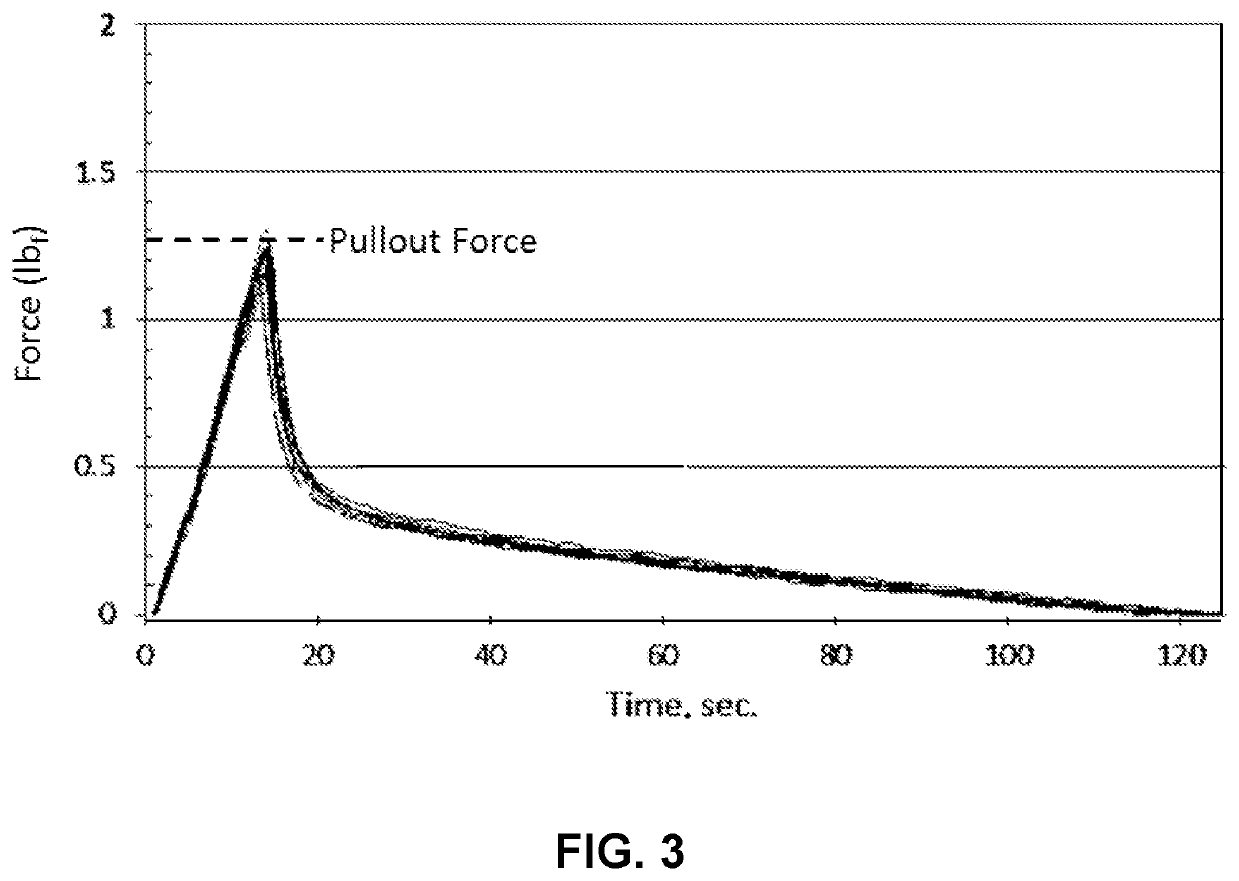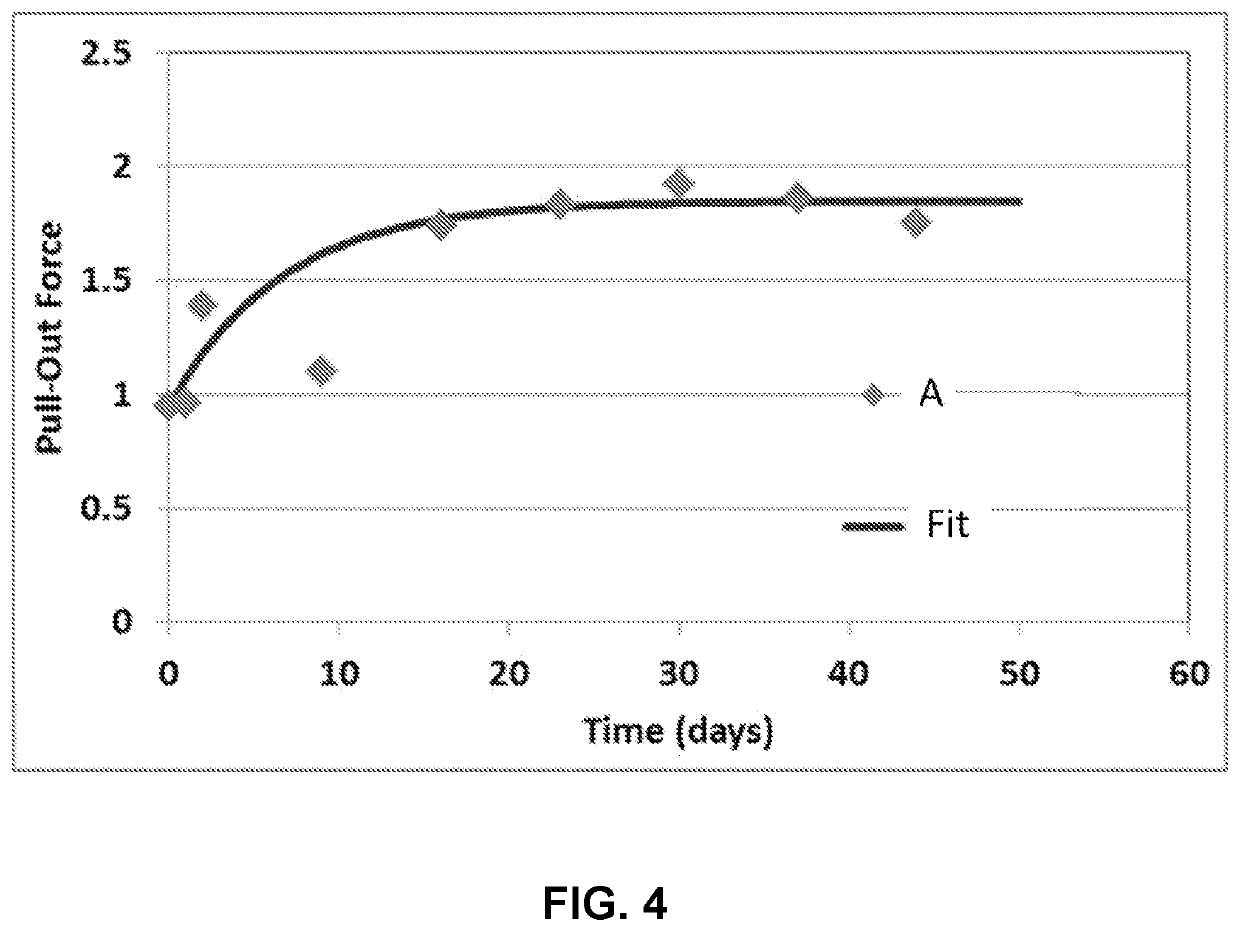Fiber coatings with low pullout force
a fiber coating and pullout force technology, applied in the field of fiber coatings, can solve the problems of deteriorating cohesion of the primary coating, and increasing the risk of damage to the primary coating, so as to achieve low young's modulus, low pullout force, and low adhesion
- Summary
- Abstract
- Description
- Claims
- Application Information
AI Technical Summary
Benefits of technology
Problems solved by technology
Method used
Image
Examples
examples
[0123]Several illustrative coatings prepared from coating compositions that included an oligomer in accordance with the present disclosure were prepared and tested. The tests included measurements of pullout force, tear strength, and tensile toughness. The pullout force for various thicknesses of the primary coating and the secondary coating were also tested. The preparation of oligomers, description of the components of the coating compositions, processing conditions used to form oligomers and coatings, test methodologies, and test results are described hereinbelow.
[0124]Coating Compositions.
[0125]The components of primary coating compositions and the concentrations of each component are summarized in Table 1. The coating compositions A and B listed in Table 1 are in accordance with the present disclosure. Coating composition C is a comparative composition. Additional commercial coating compositions designated as D, E, F, and G were tested for comparative purposes. The commercial c...
PUM
| Property | Measurement | Unit |
|---|---|---|
| outer diameter | aaaaa | aaaaa |
| Young's modulus | aaaaa | aaaaa |
| thickness | aaaaa | aaaaa |
Abstract
Description
Claims
Application Information
 Login to View More
Login to View More - R&D
- Intellectual Property
- Life Sciences
- Materials
- Tech Scout
- Unparalleled Data Quality
- Higher Quality Content
- 60% Fewer Hallucinations
Browse by: Latest US Patents, China's latest patents, Technical Efficacy Thesaurus, Application Domain, Technology Topic, Popular Technical Reports.
© 2025 PatSnap. All rights reserved.Legal|Privacy policy|Modern Slavery Act Transparency Statement|Sitemap|About US| Contact US: help@patsnap.com



